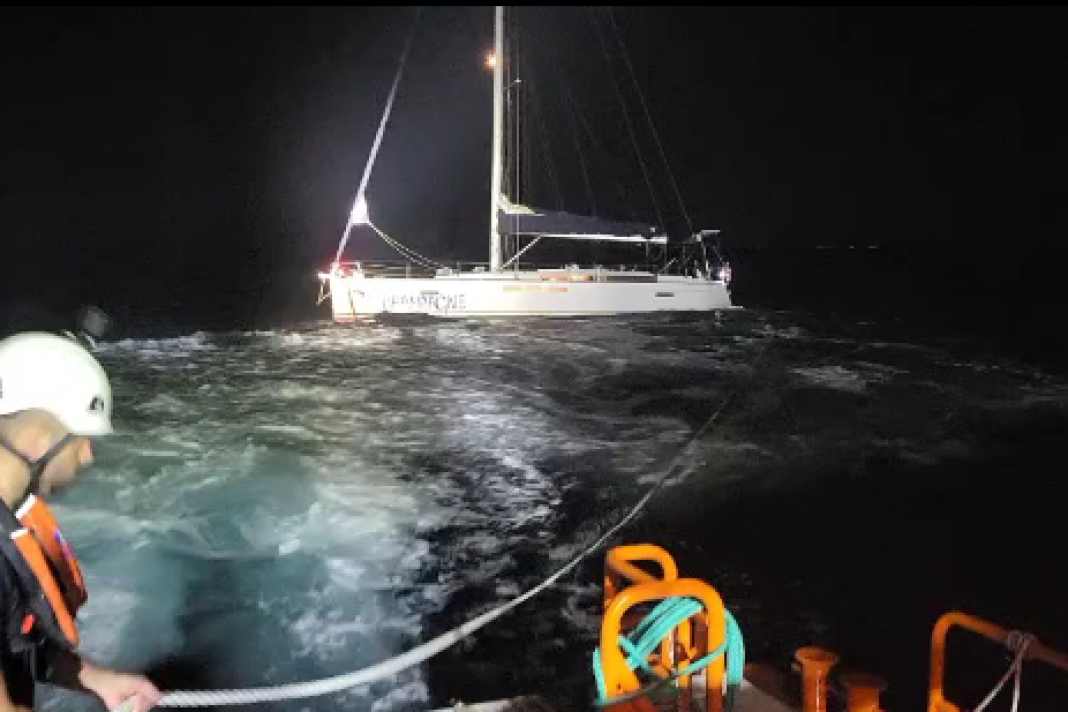





Professional skipper and author Silke Eggert was also due to take part in the ferry trip from Spain to Mallorca. She was already in the starting blocks to meet the "Champagne" (Sun Odyssey 519) in Málaga on the evening of 5 May when she heard about the accident. The yacht was on a training cruise with a crew of four from the Swiss sailing and motorboat school HOZ Hochseezentrum International from Tenerife via Málaga to Palma.
Silke Eggert was in constant contact with the crew. She reports:
"Attention, urgent announcement: Our skipper Werner Schaufelberger has just phoned and reported an attack by three orcas. The skipper and crew have behaved in an exemplary manner and are being rescued at this moment. Please do not travel, the crossing will be cancelled." This was the information from Christoph Winterhalter, President of the Swiss school HOZ Hochseezentrum International at 2.24 am.
I was immediately wide awake. Normally I don't look at my mobile phone straight after waking up, but that morning I wanted to keep an eye on the progress of the "Champagne", as the planned arrival in Benalmádena near Málaga on Friday seemed to be a tight squeeze. I spoke to the skipper late in the evening and he told me that he still had to refuel in Gibraltar.
Up until midnight, I kept checking the location and speed on marinetraffic.com. A larger motor yacht appeared to be on a collision course with the "Champagne" at 25 knots.
That was the moment of the first attack, as Werner Schaufelberger, 72, told me later: "We were running under engine and main with 7 to 8 knots of aft wind when suddenly there was a loud rumble. At first I thought we had hit something. But then I quickly realised that it was orcas that were attacking the ship."
He immediately switched off the engine and autopilot and sent out a pan-pan radio message. The motor yacht passed the "Champagne" about 200 metres off the stern. However, despite signalling with the searchlight and a call on the radio, the yacht simply continued on its way.
Tarifa's coastguard asked if they needed help and advised them to stay calm.
Despite the measures, the orcas did not let up: "The attacks were brutal. There were two smaller and one larger orca. The two smaller ones shook the rudder at the back, while the larger one repeatedly took a running start and then rammed the ship from the side with full force. We were then 90 to 100 degrees off course," reports the skipper.
Every now and then there was a few minutes of silence and the crew breathed a sigh of relief. But then the action resumed. Schaufelberger: "The two small orcas copied the technique from the large one and now came shooting towards the ship with a bit of a run-up. Mainly at the rudder, but also at the keel."
After about an hour and a half, the crew noticed water ingress in the aft section. There were two holes to the side of the rudder. They were difficult to reach because cables and hoses made access difficult. Nevertheless, the crew managed to seal one of them in a makeshift manner. But now the crew realised that they needed help. Tarifa Coastguard sent out a helicopter and a rescue cruiser.
The water continued to rise slowly and the pumps could no longer fight it. In the meantime, the orcas had let go of the yacht because their work was done: the rudder was completely destroyed and the quadrant was broken off.
After 20 minutes, the rescue cruiser was on site, took the four exhausted sailors on board, installed a powerful pump and took the "Champagne" in tow. At around 8 knots, they travelled the 11 miles towards the port of Barbate, west of Gibraltar. But shortly before entering the harbour, it became clear that there was no hope for the yacht: the water was almost up to the deck and the tug could no longer be steered. So the "Champagne" sank shortly before the harbour, with only the mast sticking a few metres out of the water.
Such attacks were first reported in July 2020, according to the German Foundation for Marine Conservation. However, it does not refer to attacks, but to interactions with yachts. In the following years, these unpleasant encounters increased to more than 180 cases per year. However, there have only been three total losses of yachts and no human casualties to date.
The affected area stretches from Brittany to Morocco. Around 20 per cent of these interactions result in severe damage to the affected yachts.
For Werner Schaufelberger, it was the first distress at sea that he had experienced himself. The Swiss national from the Zurich Oberland started sailing dinghies on the Swiss lakes at the age of 27. He has been sailing regularly for the HOZ Hochseeschule for 23 years now.

